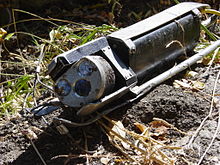Sewer camera
Sewer or inspection cameras are used to inspect areas that are no longer accessible to normal workers. They are used particularly in pipes, channels, chimneys or the like.
Construction of sewer cameras
- Push-head cameras
The sewer cameras are mounted on the end of a push cable and in this way brought into the object to be examined. The sewer camera must be supplied with power and a data cable, which is also via the push cable. The sewer camera is encased in a metal housing. The canal is illuminated with a light module that surrounds the lens of the canal camera.
- Canal cameras with trolley
To reach places that cannot be reached with push-head cameras, z. B. Module cameras with caterpillar drive are used.
Use of sewer cameras
Sewer cameras are used to locate damaged areas and blockages within a pipe or a water pipe. A variety of defects can be detected, from small cracks to larger pipe breaks. Limescale and dirt deposits, which significantly hinder the flow of water, can also be reliably detected. The use of a sewer camera has the advantage that in the event of damage, the entire pipe does not have to be exposed and disassembled, but the defective point can be repaired in a targeted manner.
The light module for the sewer camera
Ideally, the lens of a sewer camera is surrounded by a light module so that the object to be examined can be illuminated. The light module is provided with a circular printed circuit board and equipped with halogen lamps or light emitting diodes . In order to achieve improved illumination of the examination area, especially at close range, a patented process has been used to improve the circuit board so that two different lighting fixtures can be used.
Others
Not only cameras, but also pressure testing systems are used for sewer inspection.

